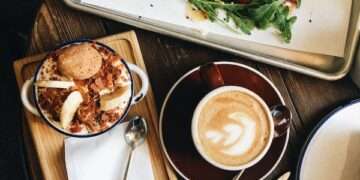
Baby meals refer to the food and nutrition provided to infants and young children as they transition from breastfeeding or formula feeding to consuming solid foods. These meals are specifically tailored to meet the nutritional needs of babies during their early stages of development. Introducing solid foods to your baby is an exciting milestone. It’s a chance to explore new flavors, textures, and nutrients essential for growth and development. Whether starting with purees or transitioning to finger foods, providing balanced, nutritious meals is key to establishing healthy eating habits.
We provide you with an excellent shopping experience as our client’s satisfaction matters a lot. Save money! Quality baby meals at a great price.
Here’s a guide to preparing baby meals, including what to serve at each stage, tips for meal prep, and sample recipes.
Type of baby meal items:
Feeding bottle with a spoon:
A feeding bottle with a spoon, also known as a spoon feeder or a spoon-feeding bottle, is a specialized feeding tool designed to assist parents in feeding infants and young children.
Here’s how it typically works:
- Design: A feeding bottle with a spoon typically consists of a squeezable silicone or plastic bottle attached to a spoon-shaped attachment at the tip. The spoon may be detachable for easy cleaning and storage.
- Functionality: The Baby Bottle Feeder is filled with liquid food, such as baby purees, infant cereals, or homemade baby food blends. When the bottle is squeezed, the liquid food is dispensed through the spoon attachment, allowing parents to control the flow and amount of food given to the baby.
- Ease of Use: Feeding bottles with spoons are easy to use and can be operated with one hand, allowing parents to feed their baby while holding them securely with the other hand. The spoon attachment ensures that the food is delivered directly into the baby’s mouth, minimizing mess and spills.
- Portability: Many feeding bottles with spoons are designed to be lightweight and portable, making them convenient for use at home or on the go. They can be easily packed in a diaper bag or purse for feeding sessions while traveling or away from home.
- Hygiene: Feeding bottles with spoons are typically made from materials that are safe for use with food and easy to clean. The spoon attachment can be removed and washed separately from the bottle, and both components are usually dishwasher-safe for added convenience.
- Age and Developmental Stage: Baby meals Feeding bottles with spoons are suitable for babies who are transitioning from breastfeeding or bottle-feeding to eating solid foods. They are particularly helpful for introducing infants to the taste and texture of pureed or mashed foods before they are ready to self-feed with a spoon.
- Feeding Flexibility: Feeding bottles with spoons allows parents to feed their baby a variety of foods, including purees, cereals, yogurt, and fruit blends. The controlled flow of food through the spoon attachment makes it easier for babies to swallow and reduces the risk of choking.
Wheat Straw Tableware Set
Top 8 benefits of wheat straw tableware sets:
- Eco-Friendly Material: The baby dinnerware set is a byproduct of wheat production and is biodegradable, compostable, and sustainable. Using tableware made from wheat straw helps reduce reliance on single-use plastics and minimizes environmental impact.
- Durable and Lightweight: Despite being lightweight, the baby feeding kit is durable and sturdy enough to withstand daily use. It is suitable for both indoor and outdoor dining, making it ideal for picnics, camping trips, and casual gatherings.
- Safe for Food Contact: Wheat straw tableware is free from harmful chemicals such as BPA, phthalates, and PVC, making it safe for food contact. It is non-toxic and odorless, ensuring that it does not impart any unwanted flavors or odors to food.
- Microwave and Dishwasher Safe: Many wheat straw tableware sets are microwave and dishwasher safe, allowing for easy reheating of food and hassle-free cleaning. However, it’s essential to check the manufacturer’s guidelines for specific care instructions.
- Versatile Design: Wheat straw tableware sets come in a variety of designs, including plates, bowls, cups, utensils, and serving trays. Baby meals available in different colors and styles to suit various preferences and complement any dining table decor.
- Heat and Cold Resistance: Wheat straw tableware is heat-resistant and can withstand temperatures typically encountered during serving and dining. It is also suitable for serving both hot and cold foods and beverages without warping or cracking.
- Minimalist Aesthetic: Wheat straw tableware sets often feature a minimalist and modern aesthetic, making them an attractive addition to any kitchen or dining room. They are sleek, stylish, and available in a range of trendy colors to suit different tastes.
- Affordable and Accessible: Wheat straw tableware sets are typically affordable and readily available from various retailers, making them accessible to consumers looking for sustainable dining options without breaking the bank.
Bottle Drying Rack
A baby drainer or bottle drying rack is a specialized accessory designed to safely and hygienically dry baby bottles, nipples, pacifiers, and other feeding accessories after washing. Here are some features and benefits of a baby meals drainer or bottle drying rack:

- Compact Design: Baby drainers typically feature a compact and space-saving design, making them ideal for use in small kitchens or limited countertop space.
- Multi-level Drying: Many travel bottle drying racks come with multiple tiers or branches, allowing you to dry multiple bottles and accessories simultaneously. This helps optimize drying space and ensures efficient air circulation for quick drying.
- Separate Compartments: The cactus-shaped bottle holder may include separate compartments or slots for different types of items, such as bottles, nipples, breast pump parts, pacifiers, and teething toys. This helps keep items organized and prevents them from touching each other during drying.
- Removable Drip Tray: Some baby drainers feature a removable drip tray at the bottom to collect excess water and prevent it from pooling on the countertop. The drip tray can be easily emptied and cleaned to maintain hygiene.
- Easy to Clean: Baby meal drainers are typically made from BPA-free plastic or other easy-to-clean materials. They can be quickly wiped down with a damp cloth or washed with mild soap and water for hassle-free maintenance.
- Sturdy Construction: A good-quality baby drainer should have sturdy and stable construction to support the weight of wet bottles and accessories without tipping over. Look for a drainer with non-slip feet or a weighted base for added stability.
- Versatility: Some baby drainers are designed to be versatile and can accommodate various types and sizes of baby bottles, including wide-neck and narrow-neck bottles. They may also be suitable for drying breast pump parts, sippy cups, and utensils.
- Portable: Certain baby drainers are collapsible or foldable, making them convenient for travel or storage when not in use. They can be easily packed into a diaper bag or suitcase for use during family vacations or visits to grandparents’ houses.
- Hygienic Drying: By allowing baby bottles and accessories to air dry on a dedicated drying rack, you can help prevent the growth of mold, mildew, and bacteria. This promotes hygienic feeding and reduces the risk of contamination.
Baby water cup
- Our Baby water cup glows in the dark for up to 8 hours, so it’s easy to find at night; simply place it under a lamp or in the sun to recharge. Its lightweight design for added comfort and robust construction guarantee maximum performance, year after year.
- The water cup reduces spills and the silicone teat underneath makes it easier for children to drink with fewer drops. The durable handle is designed to fit perfectly in all your little ones’ hands, so they can sip easily. This baby meals water cup will keep your child hydrated with fresh, cold water during long car journeys or outings.
- The baby meals drinking cup features super-soft ergonomic handles, so the baby can hold the water bottle himself. Its streamlined shape makes it easy to grip and hold. It’s the best way to drink easily without taking a break and to reduce messy cleaning.
In this baby meals blog, we’ll explore the surprising benefits of open-cup drinking and how Avanchy’s products can support your baby through this important milestone.

Why Encourage Baby Water Cup Drinking?
1. Enhances Oral Motor Skills
Drinking from an open cup helps develop the muscles in the mouth and jaw, which are crucial for speech development and eating solid foods. The coordinated movements required to drink from an open cup can strengthen these muscles, paving the way for better communication skills.
2. Promotes Better Hydration
Using an open cup can help your baby drink more efficiently, leading to better hydration. Babies who are accustomed to sippy cups or bottles might drink more slowly or less effectively from an open cup, but with practice, they can consume more fluids, ensuring they stay well-hydrated.
3. Reduces the Risk of Tooth Decay
Extended use of bottles and sippy cups can contribute to tooth decay, especially if they contain sugary liquids. This baby water cup drinking encourages quicker consumption, reducing the amount of time liquids are in contact with the teeth and thus lowering the risk of cavities.
4. Supports Hand-Eye Coordination
Holding and drinking from an open cup requires precise hand-eye coordination. This practice helps develop these motor skills, which are essential for other tasks such as feeding themselves, drawing, and eventually writing.
When to Start Baby Meals
The ideal time to start introducing solid foods is around 6 months when your baby is developmentally ready. Look for these signs of readiness:
- The ability to sit up with minimal support.
- Show interest in your food and reach for it.
- Good head and neck control.
- The ability to move food from the spoon to the throat (loss of the tongue-thrust reflex).
Start with simple, single-ingredient purees or soft, mashed foods and gradually introduce new flavors and textures.
Stages of Baby Meals
Stage 1: 4-6 Months (First Foods)
During this stage, babies start with simple purees. Focus on single-ingredient foods that are easy to digest.
- Foods to Offer:
- Mashed or pureed vegetables: carrots, sweet potatoes, peas, squash.
- Pureed fruits: apples, bananas, pears, avocados.
- Iron-fortified baby cereals mixed with breast milk or formula.
- Pureed protein sources: cooked and pureed chicken, turkey, or tofu.
- Sample Stage 1 Recipe: Sweet Potato Puree
- Ingredients: 1 sweet potato, breast milk/formula (optional)
- Instructions: Peel, cube, and steam the sweet potato until soft. Blend with a bit of breast milk or formula to achieve a smooth consistency.
Stage 2: 6-8 Months (Introducing More Variety)
As your baby becomes accustomed to eating, you can introduce more complex combinations of foods and slightly thicker textures.
- Foods to Offer:
- Soft, mashed or finely chopped fruits and veggies: apples, pears, carrots, spinach, and broccoli.
- Whole grains: oatmeal, quinoa, barley.
- Proteins: pureed or finely minced meats, eggs, lentils, beans, and fish (make sure it’s fully cooked).
- Dairy: full-fat yogurt, cheese (small amounts).
- Sample Stage 2 Recipe:Apple and Carrot Mash
- Ingredients: 1 apple, 1 carrot, water
- Instructions: Peel and chop the apple and carrot. Steam until soft, then mash together with a little water to make a smooth or slightly chunky consistency.
Stage 3: 8-10 Months (Finger Foods and Chunkier Textures)
At this stage, your baby is likely ready for more texture and finger foods. Encourage self-feeding with small pieces of soft foods.
- Foods to Offer:
- Soft pieces of cooked vegetables (broccoli, zucchini, sweet potato).
- Soft fruits cut into bite-sized pieces (banana, berries, soft peaches).
- Small pasta shapes or rice.
- Shredded chicken, turkey, or ground meats.
- Soft scrambled eggs, cooked beans, or lentils.
- Finger foods like toast, small pieces of cheese, or whole grain pancakes.
- Sample Stage 3 Recipe: Avocado and Banana Mash
- Ingredients: 1 ripe avocado, 1 ripe banana
- Instructions: Mash the avocado and banana together. Serve as a chunky mash or let your baby practice self-feeding by offering small spoonfuls.
Stage 4: 10-12 Months (More Independence and New Flavors)
As your baby approaches their first birthday, they’ll be more adept at handling finger foods and may even start using a spoon.
- Foods to Offer:
- Soft-cooked vegetables, fruits, and proteins.
- Small pieces of well-cooked pasta, rice, or soft bread.
- Mildly seasoned foods (without added salt or sugar).
- Full-fat dairy like yogurt, cottage cheese, and small amounts of whole milk (after 12 months).
- Nut butter (spread thinly) and soft tofu.
- Sample Stage 4 Recipe: Chicken and Veggie Stir-Fry
- Ingredients: ½ cup shredded chicken, small pieces of steamed broccoli and carrots, ¼ cup cooked brown rice.
- Instructions: Combine shredded chicken, veggies, and rice. For extra flavor, you can mix in a bit of mild, unsalted chicken broth.
Tips for Preparing Baby Meals
- Batch Cooking:
- Prepare large batches of purees or soft foods and freeze them in ice cube trays for individual servings. This saves time and makes meal prep easier throughout the week.
- Gradually Introduce New Foods:
- Introduce one new food at a time, especially if it’s a common allergen like eggs, peanuts, or wheat. Wait 3-5 days before introducing another new food to watch for any allergic reactions.
- Focus on Iron-Rich Foods:
- Babies’ iron stores begin to deplete around 6 months, so include iron-rich foods such as iron-fortified cereals, pureed meats, lentils, and leafy greens.
- Avoid Added Sugar and Salt:
- Keep meals simple and nutritious by avoiding processed foods, added sugars, and salt. Focus on natural flavors from fruits, vegetables, and herbs.
- Stay Consistent with Breast Milk or Formula:
- Solid foods are complementary at first. Your baby should continue to receive breast milk or formula as their primary source of nutrition until at least 12 months old.
- Create a Routine:
- Establish regular mealtimes to help your baby develop healthy eating habits. Offering meals at the same time each day creates a sense of routine.
Conclusion
Preparing baby meals is a rewarding way to introduce your little one to a variety of flavors and nutrients. By gradually offering new foods, ensuring balanced nutrition, and making mealtimes enjoyable, you’ll set the foundation for a lifetime of healthy eating habits.
kidsmodelistamagazine

































